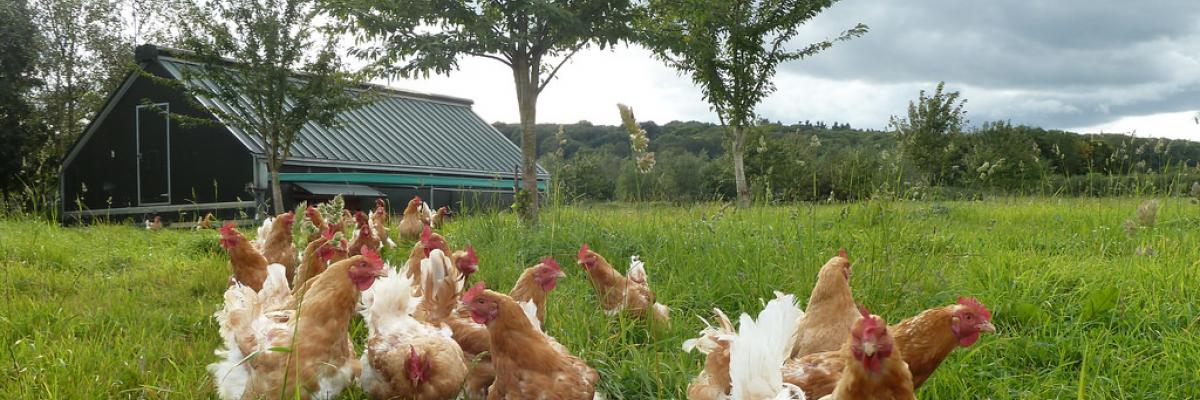

Fulfilling 100% organic poultry diets: Roughage & foraging from the range
ICOPP Technical Note 2
Download the PDF
This guide investigates the role that ranging and forage feeding can play in contributing to fulfilling the nutritional requirements of poultry.
The 4-page leaflet (Technical Note 2 of a series of 4) is an output of the ‘Improved Contribution of local feed to support 100% Organic feed supply to Pigs and Poultry’ project, which ran from 2011 to 2014.
The benefits of herbage and ranging are outlined along with specific crops and herbs that can be grown to improve forage quality. The ways in which these crops can contribute to the forage diet are described along with some useful management tips.
Recommendations are made for feeding strategies to increase the intake of forage from both the range and rations, with information included on the use of silage. Environmental considerations are discussed together with ideas for increasing biodiversity to facilitate self-supplementation of diets.
- It is recommended that organic poultry producers implement strategies to increase the overall intake of forage from both rations and the range.
- Through encouraging ranging, you can increase the welfare of your poultry by allowing them to express their natural behaviour, and also benefit from them becoming an integrated part of the whole farming system. Increased foraging of suitable vegetation can increase the cycling of nutrients within the system and can also help ease the transition to 100% organic rations.
- You can use various crops to improve forage quality. Grass/clover leys can contribute to poultry diets and additional herbs such as chicory may provide higher nutritional value.
- Lucerne or crop silage may provide a good level of nutrients including essential amino acids.
- Silage consumption increases with the age of the poultry. Broilers can eat between 10% and 20% of the daily dry matter in the rearing period (week 1 to 4) and up to 30% in the fattening period (week 5 to 8). Silage intake of up to 20% of the total daily dry matter feed intake can be achieved in laying hens.
